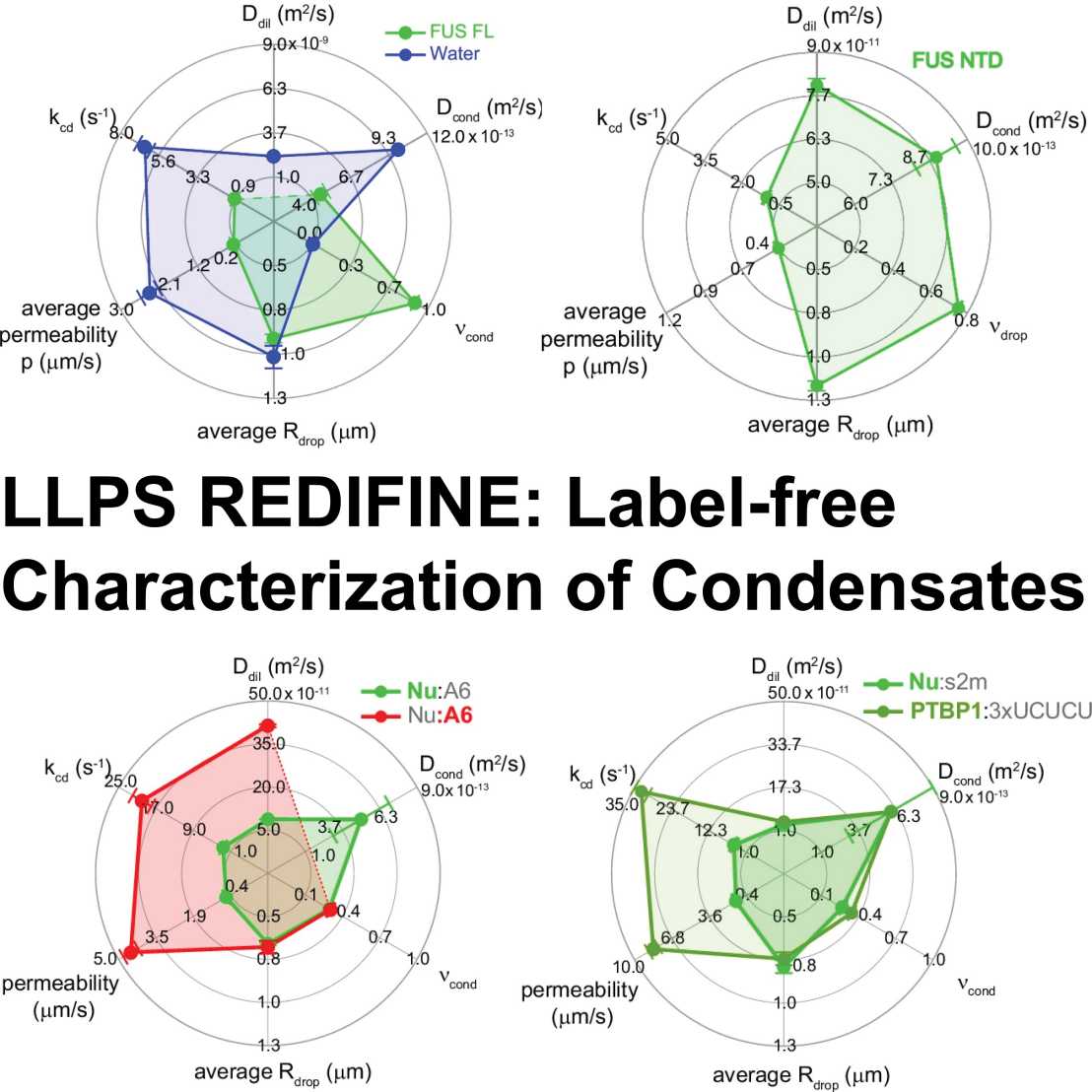Label-free Characterization of Liquid-Liquid Phase Separation
In a “Nature Communications” paper researchers of the Allain lab (IBC) describe an NMR-based approach to characterize molecular condensates without the need to tag or otherwise label the involved molecules. Besides eliminating alteration of results through labels, the method allows the determination of several quantifiable properties at once.

Growing evidence shows the importance of membraneless cellular compartments in health and disease. However, there is a lack of non-invasive methods to study these liquid-liquid phase separated (LLPS) systems, aggravated by the numerous examples where tagging proteins fundamentally changes the properties of these systems. The Allain lab now developed a method for the rapid label-free determination of key properties of molecular condensates such as the diffusion constant and fraction of a molecule in either phase, exchange rates between the phases and average droplet radius and permeability.
The approach called LLPS REDIFINE, which stands for REstricted DIFusion of INvisible speciEs, is based on a mathematical model into which are fed the measurements of NMR-based diffusion measurements of the studied droplets, which are stabilized in an agarose matrix. From this model, one can then extract the respective quantitative key properties of the studied system and its involved molecules. The method does not require any labelling of the studied molecules, also not needing isotope labelling for the NMR measurements, and the data can be acquired on low-field spectrometers and at moderate concentrations of the studied molecules.
The dissociation constant and association rate constant can be measured by REDFINE also for soluble biomolecular complexes. This approach should facilitate the study of LLPS and its biological roles in health and disease, and it is expected that it can be extended for in cell NMR microimaging of macromolecular condensates.
Link to the paper in external page "Nature Communications".